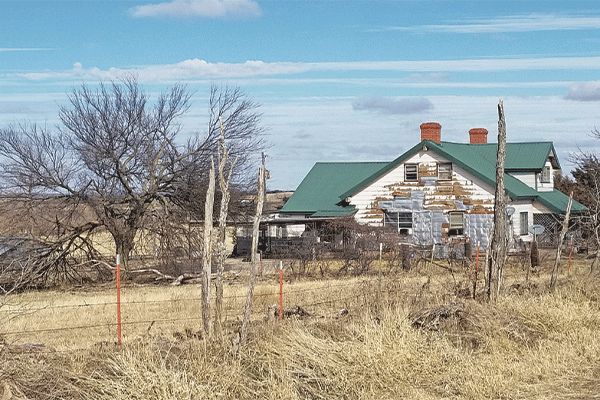ACME – Just over the Comanche County line, in far southwestern Grady County, three miles east of Rush Springs, is the remnants of a community known as Acme.
I came to Acme as part of “Small Town Matters,” a column I started at Red Dirt Report, an online news publication I operated from 2007 to 2020. During that time I would throw a dart at a map of Oklahoma and visit the town the dart landed on or landed near. This took me all over our great state, from towns like Ralston and I.X.L. to ghost towns like Boggy Depot, which was once home to Choctaw Chief Allen Wright, the man who coined the word “Oklahoma.”
And now that I am writing for the Southwest Ledger, I was allowed to bring “Small Town Matters” to the newspaper to highlight small towns in Southwest Oklahoma. Quite accidentally, while on my phone, I put a “pin” on a map of the state and it landed on Acme, a community I had previously never heard of.
Traveling out of Oklahoma City and eventually south on State Highway 81 toward Rush Springs, I turned off on Highway 1520, eventually reaching County Road 2790.
It was a cool February day. Late morning. High cirrus clouds hung against the deep blue Oklahoma sky. Pink Floyd’s “Shine On You Crazy Diamond” was playing on the radio, adding an eerie aural tapestry to the scene before me. As I arrived in what was Acme – there was no sign, just some older houses and trailers on a hillside, next to the county road – and a lone dog to greet me, from a distance.
There really wasn’t much to see, although I could imagine what had been here a century earlier, when it had its own school, boarding houses and even a general store. Like Boggy Depot over in Atoka County, Acme was just a spot on the map that was there in memory only.
REMEMBERING AN ACME FIREFIGHTER
Yes, it does have a fire station. And, sadly, it was back on March 1, 2006, in the midst of a series of wide and far-reaching wildfires which was plaguing the state that year, when 32-year old volunteer firefighter and paramedic Destry Horton who was with Grady County Fire Service and Acme Fire Department, and served with the Chickasha Fire Department, was bravely fighting a fire near Duncan, in Stephens County, when a fellow Acme firefighter was in peril. Horton jumped to the rescue and was severely burned in that fire when wind suddenly changed direction. Taken to a burn unit in Oklahoma City, Horton succumbed to his injuries on March 24, 2006.
Stanley Pittman has spent most of his life in the Acme area, which is about two miles from his home. Since the 1950’s, when he was young Pittman has seen the remnants of the once busy town slowly disappear.
“Back in the 1980s there was still the remains of a large concrete building” that had been part of the mill, recalled Pittman. “We told the old building down and used the concrete for ditches there.”
Pittman, who actually lives in a trailer home on an old Indian burial ground, said that in the early 20th century, Acme had been a bustling community, with the Acme Cement and Plaster Company building both a mill and a power plant in there in 1911, just four years after statehood, and the focus was on the mining of gypsum. A lot of this is recounted in a book Pittman noted titled Trails, Rails & School Tales: A History of 125 Schools and Communities of Grady County by Gwen Jackson and Brunetta Griffith.
At its peak year of production, there were an estimated 125 mill workers employed at the Acme Cement and Plaster Plant, with the Chicago, Rock Island and Pacific Railroad building a rail spur to serve the plant. It was reported that up to eight railcar loads of gypsum was placed on the railcars every working day.
A dozen or so years after the plant opened, the gypsum beds were exhausted and efforts were put into place to build a narrow-gauge railroad between Acme Cement and Plaster Company and some similar gypsum beds located near the Little Washita River.
But when heavy rains began falling in 1926 and into 1927 in the central parts of the United States, flooding the Mississippi River and sending it and its tributaries over its banks – including Little Washita River, which flowed near Acme. The gypsum beds were covered with several feet of sand, following the flood, and while the company eventually dug them out, it was increasingly viewed as unprofitable going into 1930, at the start of the Great Depression, and the railroad and mill were all shut down, leading to Acme’s rapid decline.
And today, when you stand in the middle of the road that once bisected Acme in its heyday, you can see a lonely hawk circling in the cold, winter sky. Acme is gone but not entirely forgotten.




